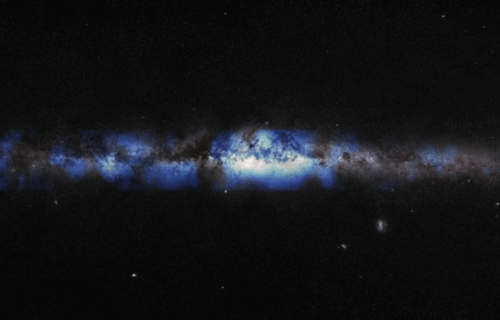MADISON, Wis. — The mesmerizing Milky Way galaxy, a brilliant band of stars that graces our night sky, has revealed a stunning new dimension. Scientists at the IceCube Neutrino Observatory have unveiled an image of the Milky Way using neutrinos — tiny particles that carry astronomical information like a ghostlike messenger. In a groundbreaking study, the international IceCube Collaboration, comprised of over 350 scientists, has revealed evidence of high-energy neutrino emissions originating from our galaxy, shedding light on its cosmic mysteries.
“What’s intriguing is that, unlike light in any wavelength, the universe outshines the nearby sources in our own galaxy,” says Professor Francis Halzen, principal investigator at IceCube, in a statement.
The IceCube research focused on the southern sky, where neutrino emissions from the galactic plane are expected to be concentrated near the center of the Milky Way. However, distinguishing galactic neutrinos from background noise posed a challenge due to the Earth’s atmosphere producing neutrinos and other particles through cosmic-ray interactions. To overcome this obstacle, IceCube collaborators at Drexel University and TU Dortmund University developed advanced analyses and machine learning methods to identify and reconstruct astrophysical neutrinos.

The study utilized a dataset consisting of 60,000 neutrinos collected over a decade of IceCube observations. These neutrinos were then compared to predicted maps of neutrino emissions from the galaxy.
The results of the study unveiled a remarkable finding: the Milky Way emits significantly fewer neutrinos compared to distant galaxies. This revelation may hold the key to unraveling the mysteries surrounding the origin of extremely high-energy cosmic rays. Professor Ke Fang from UW–Madison IceCube team suggests that our galaxy may have lacked the types of sources responsible for the majority of high-energy neutrinos over the past few million years, coinciding with the last jet activity of our galaxy’s black hole.
“The capabilities provided by the highly sensitive IceCube detector, coupled with new data analysis tools, have given us an entirely new view of our galaxy—one that had only been hinted at before,” says Denise Caldwell, the director of the National Science Foundation’s Physics Division. “As these capabilities continue to be refined, we can look forward to watching this picture emerge with ever-increasing resolution, potentially revealing hidden features of our galaxy never before seen by humanity.”
This remarkable achievement represents a leap forward in our cosmic exploration, unveiling the unseen and deepening our understanding of the captivating Milky Way galaxy.
The study is published in the journal Science.
StudyFinds’ Matt Higgins contributed to this report.
